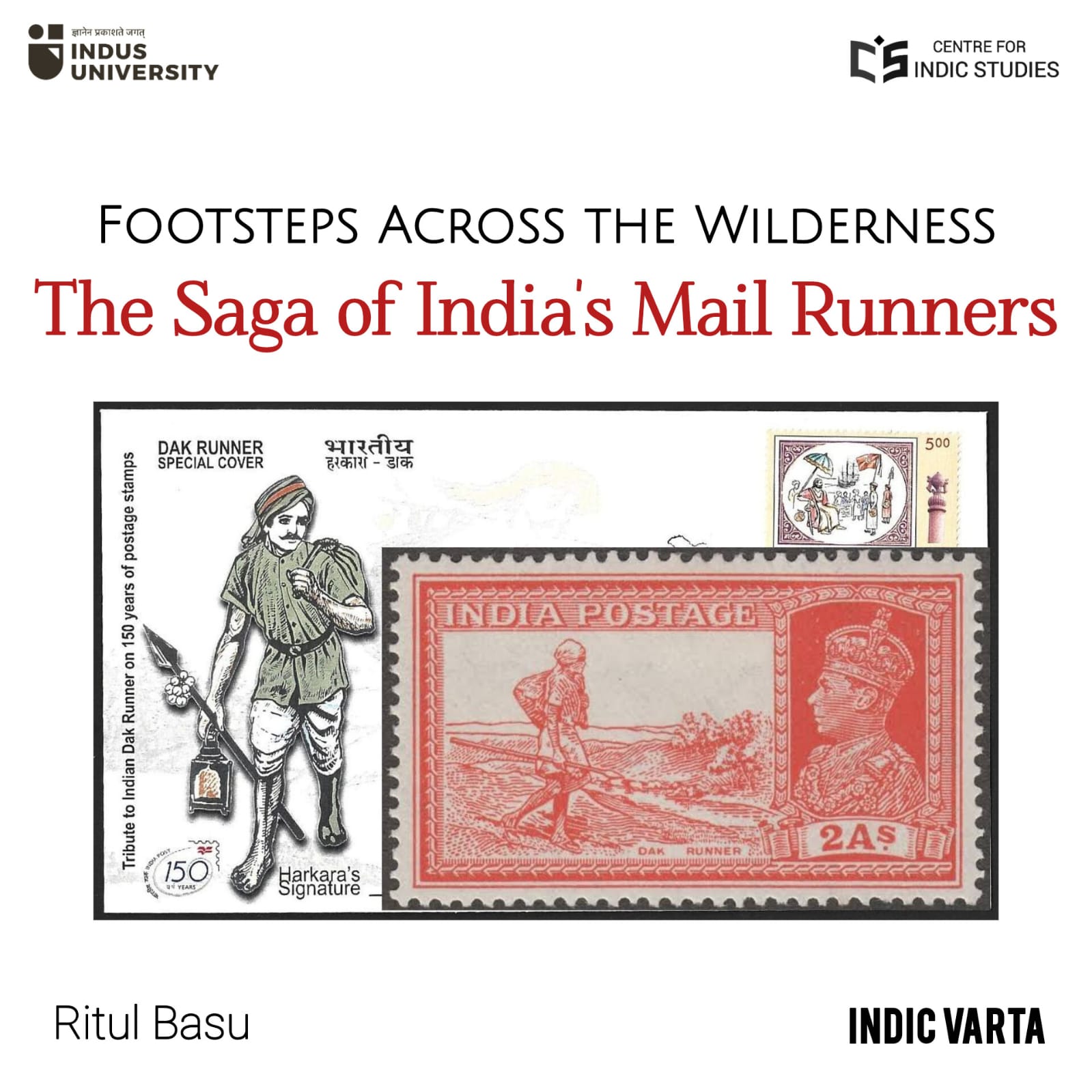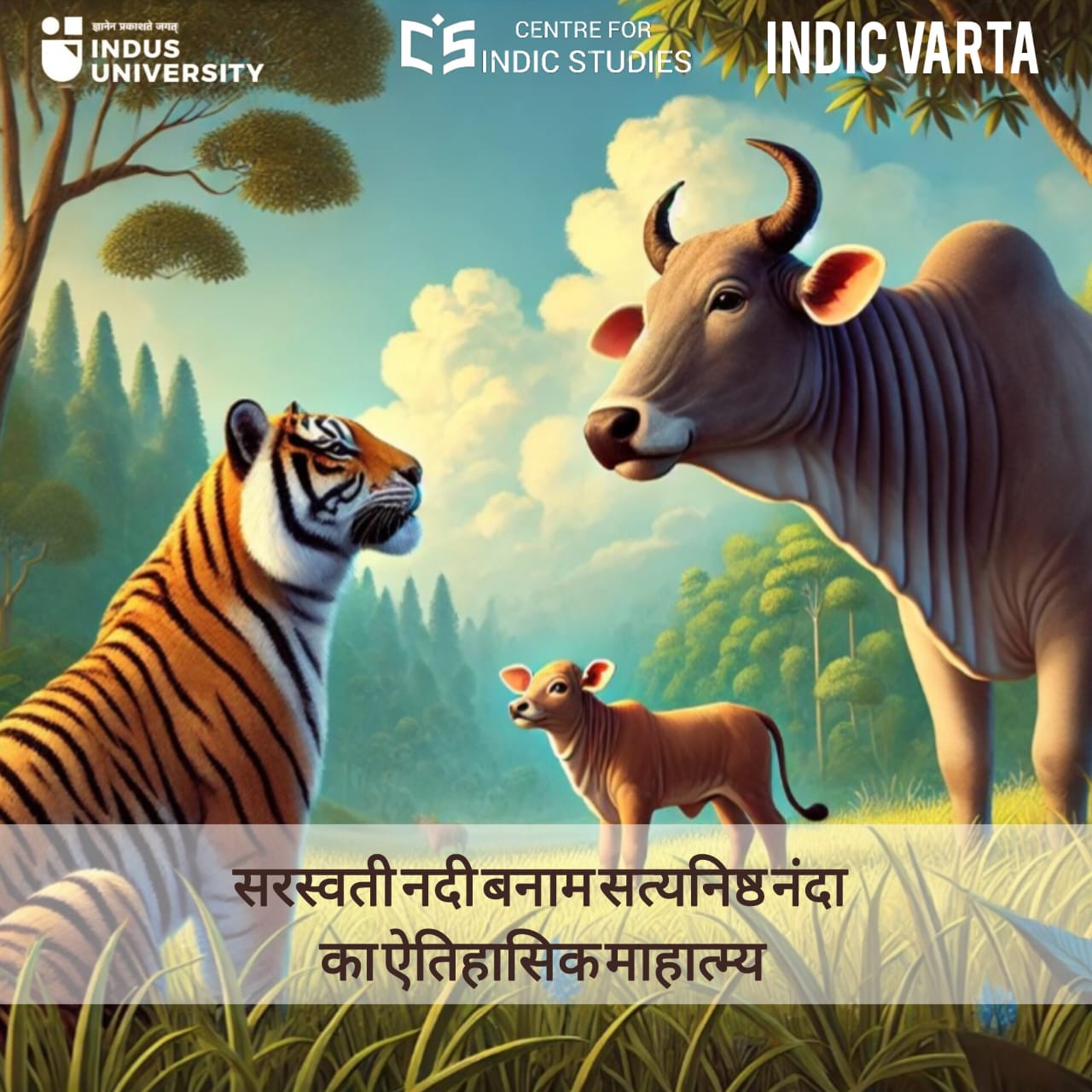- Visitor:7
- Published on: 2025-10-09 04:18 pm
Footsteps Across the Wilderness: The Saga of India’s Mail Runners
What made the dak harkara truly remarkable was not simply the incredible physical endurance required to traverse forests, deserts, or snow-laden mountain passes—it was the deeper civilisational ethos he embodied. Each step, each grueling kilometer, was more than a delivery of letters or parcels; it was an act of service before self, a principle woven into the very fabric of India’s moral and social consciousness. To risk one’s life in the face of wild animals, treacherous terrain, or human threats, yet continue faithfully onward, was to live the ideal that the welfare of the community and the continuity of society outweighed individual comfort or safety.

Long before trains roared across the plains and cars rattled over asphalt roads, India had its own heartbeat—a rhythm set by the determined steps of the dak harkaras, the mail runners. These were not mere messengers. They were the lifeline of a vast, fragmented land, bridging mountains and deserts, villages and towns, hearts and hopes.
Imagine a young runner, his bright attire catching the sunlight as he sets off at dawn. The jingling of bells tied to his waist announces his presence in the dense forest ahead. In one hand, he grips the mailbag; in the other, a spear—both his tools of duty and defense. Beyond him lies a land untamed, unpredictable, and often merciless. Tigers stalk silently among the shadows, venomous snakes curl in the undergrowth, and the rivers swell unpredictably after heavy monsoon rains. Yet, he walks on. For him, every step is a promise kept.
This article is about the extraordinary journeys, courage, and civilisational significance of India’s dak harkaras, who carried not just mail, but the spirit of a nation across its most challenging terrains.
Origins of a Lifeline
In the bustling corridors of the Madras Presidency, back in 1712, Governor Edward Harrison envisioned a new system—one that would bind the far-flung corners of his administration together. The idea of a Company Postal Service was born, a lifeline through which letters, orders, and news could traverse the vast and often inhospitable Indian landscape. Roads were little more than dusty trails, rivers were unpredictable barriers, and dense forests or swamps could swallow travelers whole. Into this world of uncertainty stepped the mail runners, the dak harkaras.
Each runner was assigned a stretch of 12–13 kilometers, though some pushed themselves to cover nearly 20 kilometers in a single day. They carried not just mailbags, but responsibility, trust, and the weight of communication itself. The handover from one runner to the next was more than a simple exchange—it was a relay of sacred duty, a human chain that connected villages, towns, and administrative centers across hundreds of miles. Every footstep mattered, every stride ensured that news of governance, commerce, or personal affairs flowed uninterrupted, and every journey reinforced a network built on reliability, courage, and mutual trust.
Even as the iron tracks of railways slowly spread across India in the late 19th century, bringing speed and modernity, these runners remained indispensable. In the remote Himalayan valleys bordering Tibet, where snow-laden passes and steep cliffs made mechanical transport impossible, the harkaras continued to traverse perilous routes. Their footsteps alone connected isolated hamlets to the outside world, ensuring that governance, trade, and human bonds did not falter, even in the harshest terrains.
The Journey: Trials and Triumphs
Every day for a mail runner was a gamble with nature itself. At dawn, as the first golden rays stretched across forests, deserts, or snow-capped mountains, a runner would set off, full of purpose but with no certainty of what lay ahead. Rivers could swell unexpectedly after a sudden rain, sweeping away bridges or drowning paths that had seemed safe the day before. In the high mountains, the thunderous roar of an avalanche could split the silence, burying trails under tons of snow and ice. In the deserts, the sun transformed sand into a furnace, scorching bare feet and sapping the strength of even the fittest.
And danger was not only from the natural elements. Highway robbers lurked along trade routes, eyes trained on the precious mailbags, hands eager to seize them—and sometimes the lives of those who carried them. Between 1921 and 1923 alone, plundered mail claimed fifty-seven lives. Yet, despite the constant threat of flood, fire, frost, or theft, these runners pressed onward. To falter was not an option. Every step mattered and every delivery was a promise.
Their courage was ritualized in both attire and tools. Bright, colorful uniforms marked their presence from afar, a symbol of authority and trust that commanded respect. Spears were clutched for defense, jingling bells tied to their waists served to announce their approach and ward off danger, and in the mountainous regions, a bugle’s sharp call could echo across valleys, signaling that the vital thread of communication was moving forward. Every piece of their gear had a purpose, a ritualized expression of bravery, alertness, and unwavering commitment.
More Than Messengers: Guardians of Connection
What made the dak harkara truly remarkable was not simply the incredible physical endurance required to traverse forests, deserts, or snow-laden mountain passes—it was the deeper civilisational ethos he embodied. Each step, each grueling kilometer, was more than a delivery of letters or parcels; it was an act of service before self, a principle woven into the very fabric of India’s moral and social consciousness. To risk one’s life in the face of wild animals, treacherous terrain, or human threats, yet continue faithfully onward, was to live the ideal that the welfare of the community and the continuity of society outweighed individual comfort or safety.
The dak harkaras were also living symbols of trust and connectivity. In remote villages, the distant jingling of their bells was a harbinger of news—letters from loved ones, announcements of administrative orders, or the latest trade updates. Children would run to the path, mothers would peek from their homes, and elders would nod knowingly: a runner was more than a messenger; he was a bridge to the wider world. Merchants depended on their punctuality for trade correspondence that could mean the difference between profit and loss.
In a land as immense and diverse as India, where mountains, rivers, and deserts often kept communities isolated, these runners became invisible threads weaving the social and administrative fabric together. They were a living testament to the enduring values of discipline, courage, trust, and responsibility—an embodiment of a civilisation that understood that the strength of a society lies not in technology or wealth alone, but in the commitment of its people to uphold duty and connection, no matter the personal cost.
Lessons from Their Footsteps
Their story is one of sacrifice, discipline, and courage— values that resonate far beyond the historical context. In a world now dominated by instant communication, the dak harkaras remind us of a time when connection required persistence, resilience, and sheer human will. Their relay system teaches precision and collective responsibility, their journeys teach courage and perseverance, and their unwavering duty teaches that society thrives when individuals place collective welfare above personal comfort.
In remembering the mail runners, we do not just recount a chapter of history. We touch a story of human spirit that resonates across centuries—a story where every footstep mattered, every message carried hope, and every runner was a hero in their own right.
References
Mohta, N. (2025, January 11). Pigeons, dak runners, and railways: How India's postal services evolved over time. The Indian Express. https://indianexpress.com/article/research/pigeons-dak-runners-and-railways-how-indias-postal-services-evolved-over-time-9772954/
TNN. (2015, October 15). Clock turns back: India Post relives saga of mail runners. The Times of India. https://timesofindia.indiatimes.com/city/chennai/clock-turns-back-india-post-relives-saga-of-mail-runners/articleshow/49362507.cms
Stamps of India. (n.d.). From jingling runners to jet age speed post. https://stampsofindia.com/readroom/602.html#:~:text=trace%20them%20out.-,Runners,vogue%20almost%20a%20century%20back.
- 3 min read
- 0
- 0










